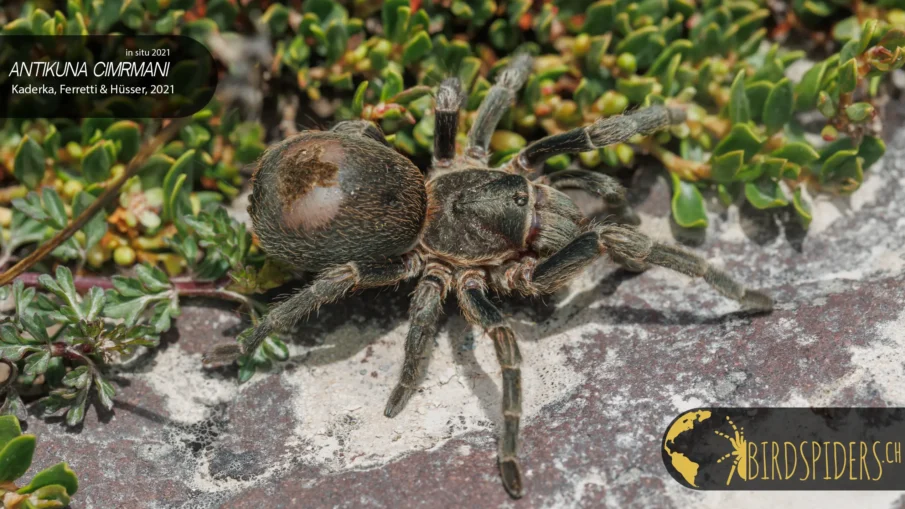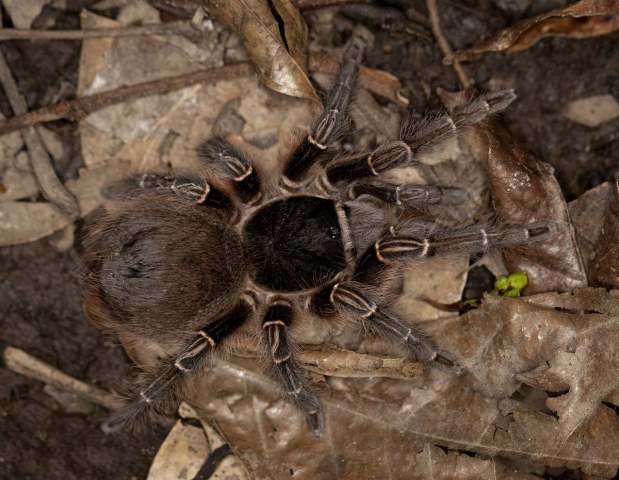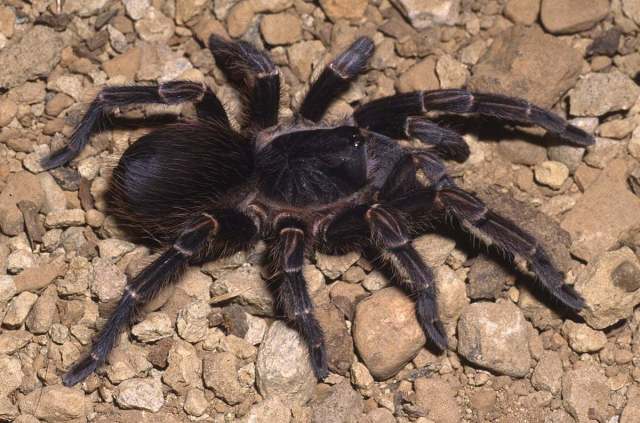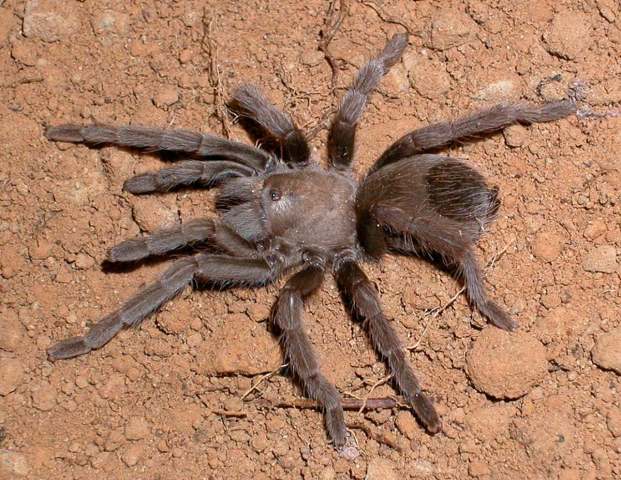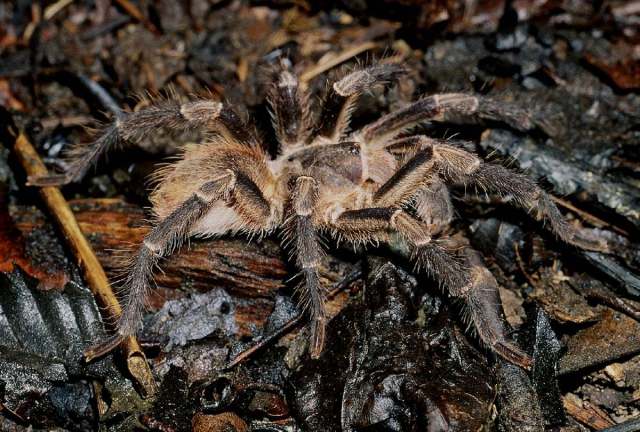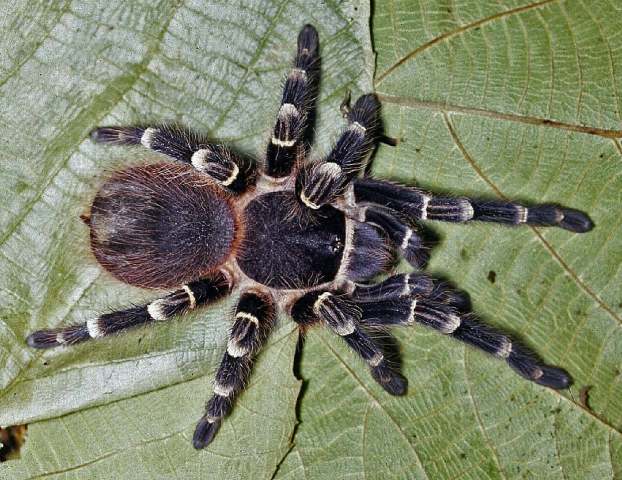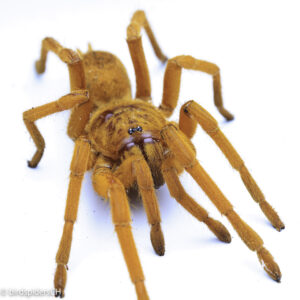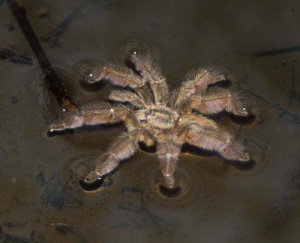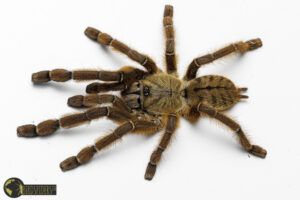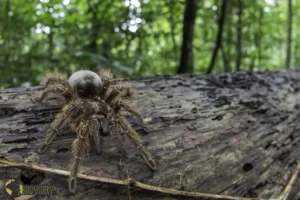This is the story of not only a new species of the hyper-diverse group of tarantula spiders. But one species group of them was so unique that it required their placement within the tree of life as a distinct group – a newly established genus of tarantula spiders.
In the barren highlands of South America, not much diverse colorful life seems to be present. Especially not at temperatures around 10 degrees celsius on a sunny morning in spring.
Under the protection of the dull brown spinifex grass, in the security of ancient rocks and solid green protections, the little jewels from the Andes roam the landscape. Even though they are tarantula spiders these individuals appear to be on the smaller end of the scale.
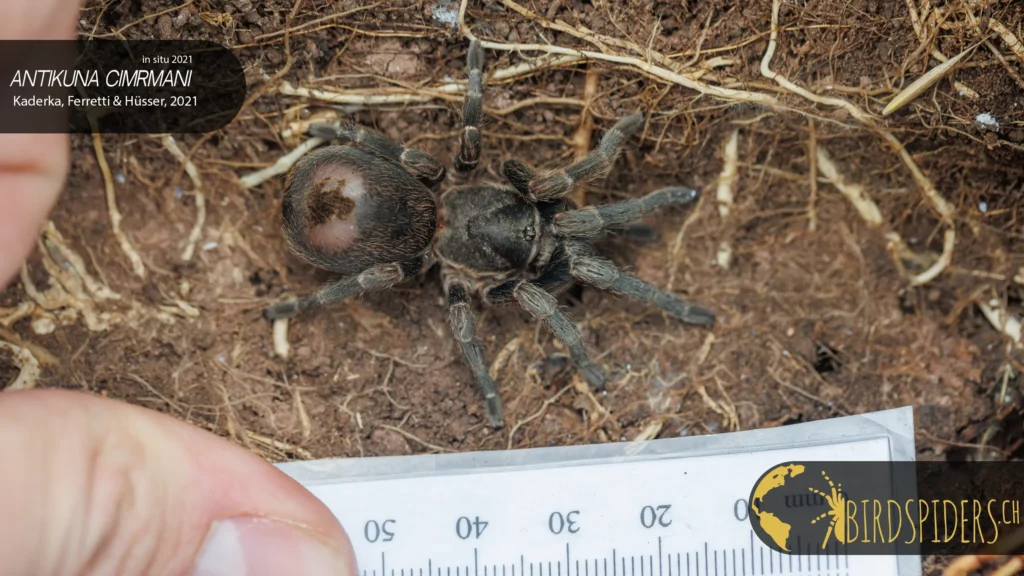
But they might always remember that their bigger cousins, the Goliath Bird Eating Tarantula is just a few thousand meters down the hill and some hundred kilometers away in the Amazon basin. Who was first? The Giant tarantula from the lush tropical forest walking up the hills and getting smaller in thousands of years of evolution? Or did these dwarf excavators walk down from the cold mountain tops down to the lush green forests and evolve into something bigger? This and many more questions regarding the ecology of these outstanding spiders is still unknown, that’s why young people with fascination are needed to find out more about them 🙂

The tarantula species Antikuna cimrmani is named after a fictional universal mastermind in Czech popular culture. A National myth of the modern Czech Republic
Antikuna cimrmani builds slightly silked tunnels underneath rocks which tend to have a “S”-curvature and do not extend into the ground. Usually, the specimens can be found directly underneath rocks. On one occasion, we found two specimens underneath the same rocks – having two tunnels and their entries completely separate from each other. The population density was rather high as well – multiple tarantulas from various life stages could be found within a spot with their preferred micro-climate and settings.
This makes this species highly prone to extreme habitat disruption with a severe outcome – within an area of 20 by 20 meters over 15 individuals could be found within minutes. Outside of its preferred habitat, no specimens could be found because of the lack of rock formations.

The word Antikuna has its origin in the Quecha language, referring to the Andean Mountain region.
The Quechua language area extends from the south of Colombia through large parts of Ecuador, Peru and Bolivia to the north of Chile and Argentina. Peru has the largest percentage of speakers, followed by Bolivia and Ecuador, while in the other countries only small minorities speak the language. Quechua is an official language in Bolivia and Peru, along with Spanish and Aymara. Today, Quechua is the most widely spoken indigenous language in South America, with probably more than 7 million speakers[10] (though estimates vary widely), ranking third in South America behind Spanish and Portuguese in terms of the number of speakers.
Literature to read:
Kaderka, R., Ferretti, N., Hüsser, M., Lüddecke, T. & West, R. (2021). Antikuna, a new genus with seven new species from Peru (Araneae: Theraphosidae: Theraphosinae) and the highest altitude record for the family. Journal of Natural History 55(21-22): 1335-1402. doi:10.1080/00222933.2021.1936680
